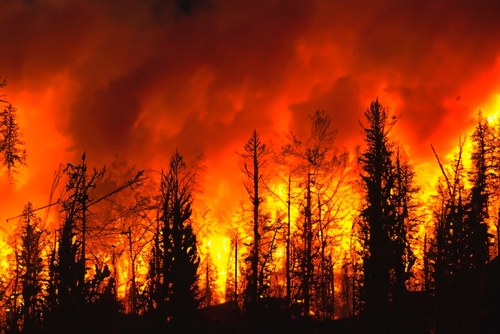Following the catastrophic Maui wildfires, which are among the deadliest in U.S. history, and with the state of Washington now grappling with its own destructive blazes, the National Fire Protection Association (NFPA) is urging governments, communities, and individual property owners alike to take science-backed steps to prepare for wildfire, reduce risks, and support more robust firefighting efforts at the local level.

“The recent tragedy in Maui and the ongoing fires in Washington underscore the vital need for collective action,” said Lorraine Carli, NFPA vice president of outreach and advocacy. “From local homeowners to the highest government levels, we must embrace mitigation strategies to protect our communities.”
Nearly 45 million homes are in the wildland/urban interface (WUI). According to the National Interagency Fire Center, approximately 71.8 million properties in the U.S. are at some risk from wildfire. Each year, some of the largest-loss fires occur in the WUI. In the past five years alone, wildfires have destroyed nearly 63,000 U.S. structures, most of which were homes, not including the recent losses in Maui.
The U.S. Forest Service estimates that less than 10% of at-risk communities have developed community action plans to reduce loss from wildfire.
“These alarming statistics point to the urgent need for a comprehensive response to the wildfire crisis. NFPA’s Outthink Wildfire initiative provides a policy framework and recommendations to prepare for, mitigate, and fight wildfires,” Carli said.
The Five Tenets of Outthink Wildfire
1. Require all homes and businesses in the WUI to be more resistant to ignition from wildfire embers and flames. Assistance by way of guidance, incentives, and clear requirements is vital in helping property owners reduce ignition risk. With tens of millions of homes and businesses in wildfire-prone areas, risk reduction must be undertaken at a speed and scale that matches the problem’s severity. Read the Outthink Wildfire policy initiative position paper.
2. Current codes and standards and sound land use practices must be in use and enforced for new development and rebuilding in wildfire-prone areas. Governments are strongly encouraged to use and enforce current fire codes, building codes, and land use practices proven to mitigate risks. NFPA provides essential guidance and documents to aid this effort: Using Codes and Standards to Reduce Risk in Wildfire-Prone Areas.
3. Fire departments for communities in the WUI must be prepared to respond safely and effectively to wildfire. NFPA research reveals a critical need to provide local fire departments with the necessary training, protective clothing, and equipment. Most departments respond to wildfires but lack sufficient resources for safe and effective action.
4. The government must increase resources for vegetative fuel management on public land. The Outthink Wildfire policy initiative highlights the importance of fuel treatments on federal, state, and tribal lands, emphasizing methods such as cultural burning, prescribed burning, mechanical treatments, and restoration practices.
5. The public must understand its role and take action in reducing wildfire risk. Individual homeowners play a vital role in wildfire preparedness. Effective measures can be taken to prepare homes and families for the dangers of wildfires. Resources available at www.nfpa.org/wildfire.
ALSO READ: Back to Basics: 10 Ways to Prepare Your Facilities for Wildfires
